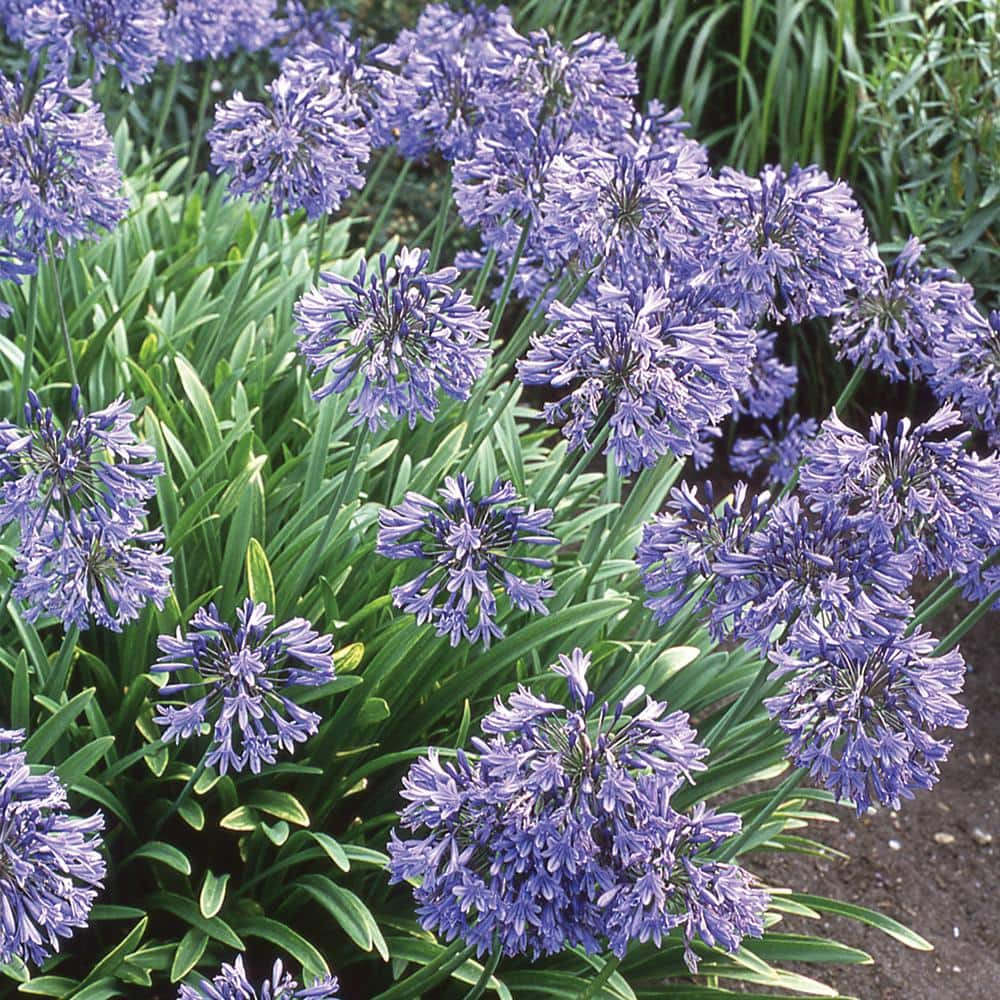Agapanthus Varieties: Selecting the very best for Your Landscape
Agapanthus Varieties: Selecting the very best for Your Landscape
Blog Article
Grasping the Art of Agapanthus Treatment: Important Steps for Healthy And Balanced Growth and Dynamic Flowers
In the world of cultivation, the cultivation of agapanthus stands as a rewarding venture for those who seek to nurture these sophisticated flowering plants. From picking the ideal variety to grasping pruning techniques, the trip in the direction of cultivating thriving agapanthus plants is complex and holds the vital to opening the complete possibility of these organic treasures.

Selecting the Right Agapanthus Selection

When selecting the right Agapanthus range for your garden, take into consideration factors such as climate viability, blossom shade, and development behavior. Agapanthus, typically referred to as Lily of the Nile or African lily, comes in a variety of shades varying from shades of blue and purple to white. Select a flower color that enhances your existing yard scheme to create an unified landscape. Additionally, take into consideration the environment in your area to guarantee the Agapanthus variety you select can grow in your particular problems. Some selections are extra forgiving of chilly temperature levels, while others choose warmer environments. Comprehending the development practice of various Agapanthus selections is important for correct positioning within your garden. Some ranges have a clumping development habit, ideal for boundaries or containers, while others have an even more spreading nature, suitable for ground cover or mass plantings. By thoroughly examining these elements, you can pick the excellent Agapanthus selection to improve the elegance of your yard.
Suitable Planting Conditions
Thinking about the ideal ecological requirements is essential for successful Agapanthus cultivation. Agapanthus plants are delicate to chilly temperature levels and ought to be protected from frost throughout winter season months.
To ensure healthy development and vivid blossoms, plant Agapanthus light bulbs at a deepness of concerning 2-4 inches and area them 8-12 inches apart. Mulching around the base of the plants assists maintain wetness and subdues weed development.
Watering and Feeding Tips
Preserving appropriate moisture levels and offering vital nutrients are essential elements in the care regimen for Agapanthus plants. When it pertains to watering Agapanthus, it is vital to strike a balance. If overwatered, these plants like constantly wet dirt however are prone to root rot. During the growing season, water deeply when a week, making sure the soil is well-draining to avoid waterlogging. In hotter environments or throughout durations of drought, more frequent watering might be essential to maintain the soil uniformly wet. Nonetheless, decrease watering in the winter to avoid waterlogged problems.
Feeding Agapanthus is crucial for promoting healthy development and respected flowers. Use a balanced plant food, such as a 10-10-10 formula, in the very early spring as new growth arises. Repeat this application every 6-8 weeks throughout the growing period. Prevent too much fertilization, as it can lead to lush vegetation at the cost of flowers. Constantly adhere to the supplier's guidelines for proper dilution and application approaches. By following these watering and fertilizing suggestions, you can guarantee your Agapanthus plants flourish and generate vibrant, durable blooms.
Pruning Techniques for Agapanthus
Pruning Agapanthus plants at the suitable times and with proper strategies is essential for keeping their wellness and advertising optimum growth and flowering. The perfect time check this site out to prune Agapanthus is in late winter season or very early springtime prior to new development emerges.
For flowered stems, wait up until the blooms have perished and after that cut them back to the base. This not just cleans the plant's appearance however also urges the advancement of brand-new flower buds. Deadheading spent blossoms can also redirect the plant's energy into generating even more blooms instead than setting seeds. Nonetheless, if you wish to gather seeds for propagation, leave some blossoms to fully grown and dry on the plant.
Remember to utilize tidy, sharp devices to make accurate cuts and lower the risk of introducing diseases. Agapanthus. Regular trimming will aid maintain your Agapanthus looking healthy and cool while guaranteeing an abundant screen of beautiful blossoms
Handling Common Insects and Diseases
After making sure proper pruning techniques for Agapanthus, it is vital to deal with common insects and conditions that can affect the health and wellness and vitality of these plants. Agapanthus plants are typically durable but can still succumb certain issues. One typical bug that impacts Agapanthus is the Agapanthus gall midget. This tiny, orange fly lays its eggs in the vegetation, causing distorted growth and flower buds that fall short to open up. To combat this insect, trim and destroy any type of affected plant parts and think about utilizing insecticidal soap.
Additionally, Agapanthus plants can endure from root rot if they are planted in improperly draining dirt. By being vigilant and taking punctual action against insects and illness, you can aid your Agapanthus plants thrive and create vivid blooms. Agapanthus.

Conclusion
Finally, grasping the art of agapanthus care entails picking the right variety, offering perfect planting problems, appropriate watering and fertilizing, proper pruning strategies, and dealing with typical pests and illness. By adhering to these important actions, you can ensure healthy and balanced development and vibrant blossoms for your agapanthus plants. Bear in click here now mind to regularly monitor and preserve your plants to advertise their overall health and long life.
To guarantee healthy development and vibrant flowers, plant Agapanthus bulbs at a depth of about 2-4 inches and area them 8-12 inches apart. By complying with these watering and fertilizing tips, you can guarantee your Agapanthus plants prosper and produce lively, resilient blooms.
One usual insect that impacts Agapanthus is the Agapanthus gall midge. you can check here Additionally, Agapanthus plants can endure from root rot if they are planted in improperly draining dirt. By adhering to these important steps, you can ensure healthy and balanced growth and vibrant blooms for your agapanthus plants.
Report this page